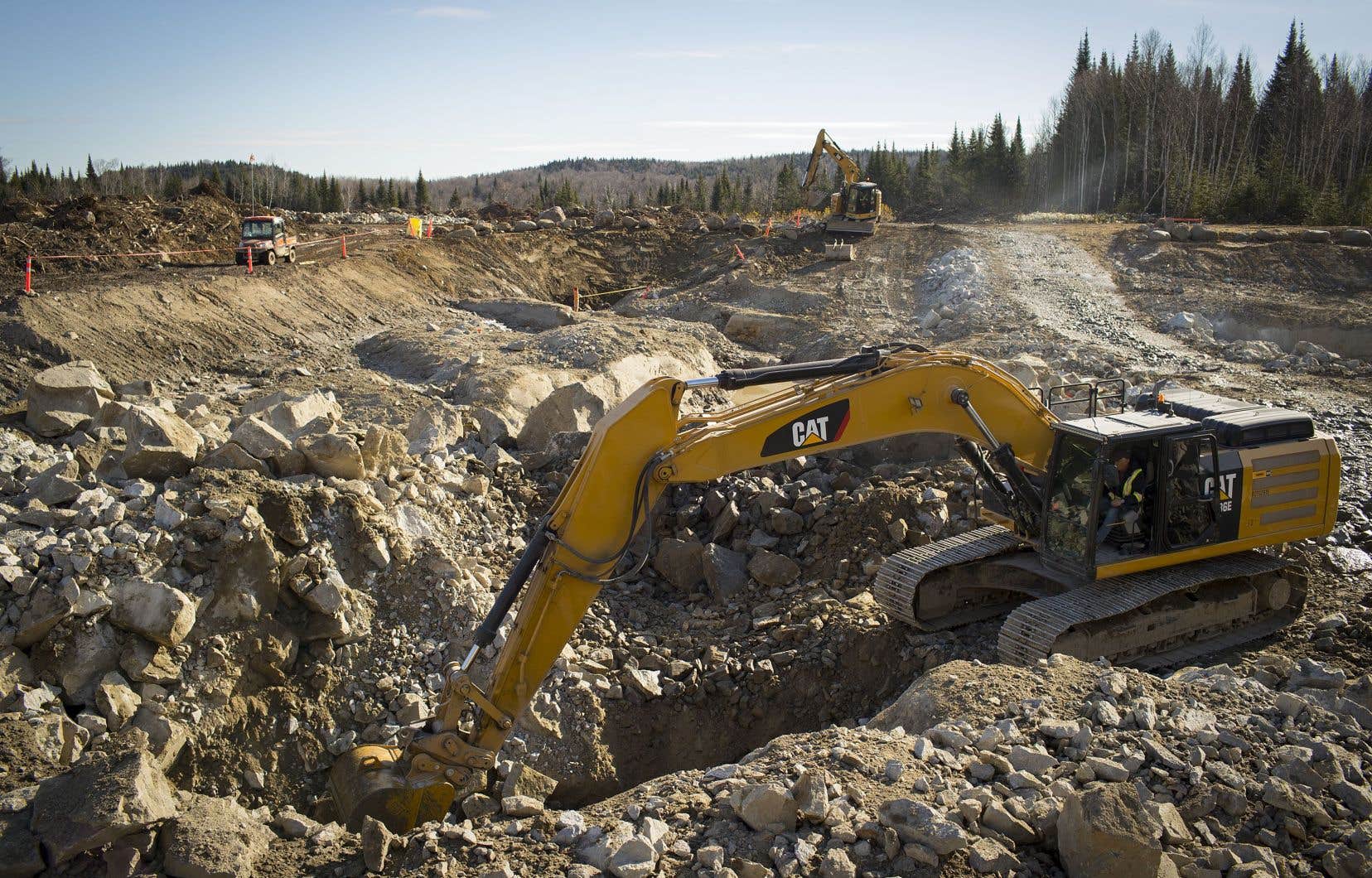The rush for mining exploration permits continued in 2023 in Quebec, with the addition of more than 83,000 new “mining claims”. The multiplication of these rights granted to industry affects all regions of the province and risks threatening biodiversity protection projects. The Legault government, however, promises to table a bill to ensure “more harmonious” development of the sector.
According to data provided to Duty by the Ministry of Natural Resources and Forests (MRNF), there were no less than 347,955 mining exploration permits in Quebec as of December 20, 2023. This is 83,382 permits more than on 1er January 2023 and 165,155 more than on March 31, 2021.
The surface area of Quebec territory covered by “mining claims” now exceeds 176,000 km2, or more than 10% of Quebec, or 400 times the area of the island of Montreal. And the growth in the number of permits continues. According to a map dated December 4, 2023, there were 2,665 additional permit requests, including 1,265 permits granted by the government between December 4 and December 20.
This same map shows that all regions of the province are targeted by mining interests. Beyond the traditionally coveted regions, such as Abitibi-Témiscamingue, the North Shore or Nunavik, we find more and more permits in Estrie, Outaouais, Mauricie, the Laurentians, Saguenay–Lac-Saint -Jean or even in Gaspésie.
Spokesperson for the Coalition Québec Meilleur Mine, Rodrigue Turgeon speaks of a “runaway” in the acquisition of permits in recent years in Quebec. “We see it very clearly when looking at the official maps. The number of permits is constantly increasing,” he summarizes. He attributes this increase in particular to the value of certain metals on the financial markets, to the encouraged search for minerals supposed to promote the “energy transition”, but also to the ease with which one can obtain, at low costs, mining titles directly. on the Web. The current method of granting exploration permits makes it possible to acquire them in just 30 minutes, provided you have access to the Internet and cover the costs, a few dozen dollars, by paying with a credit card.
According to data published this fall by the Institute of Statistics of Quebec (ISQ), it is not the sector of “minerals of the future”, therefore linked to the energy transition, which dominates the portrait for business investments who are looking for new deposits to exploit.
Precious metals, particularly gold, “remain the most sought-after substances in Quebec,” according to the ISQ portrait. They represent 64.1% of the exploration and development work costs incurred in 2022, for an amount of 585 million. “Graphite, lithium and rare earths, substances linked to new technologies, account for 12.0% (110 million). »
Review the rules?
Taking into account the fact that a very small portion of exploration permits gives rise to more in-depth research work, but also that their granting blocks other uses of the territory or protection measures, the Coalition Québec Meilleur Mine, Environmental groups and municipalities are asking the Legault government to tighten the rules that make it easy to acquire permits.
Rodrigue Turgeon underlines that the current situation has the effect of threatening the development of projects to protect biodiversity, or even territories supposed to promote the protection of nature. “The government has promised to protect 30% of the territory by 2030, but this will be difficult to achieve in all regions if we do not manage to counter the phenomenon of the growth of mining claims. Once the permit has been granted, it is an obstacle to the creation of protected areas,” he explains, recalling that the titles can be renewed indefinitely.
The boom in the acquisition of mining titles in recent years is such that several “wildlife reserves” now find themselves partly covered by exploration permits. However, these territories are presented by the Société des establishments de plein air du Québec as “vast forested and wild regions where lived experiences, linked to wildlife and the outdoors, harmonize with nature in sublime settings”.
National parks, including Mont-Tremblant and Gaspésie, are also surrounded by mining exploration permits. These permits, which can be acquired by investors without consulting local communities or without taking into account the presence of important ecosystems, also cover entire sections of habitats essential to the survival of threatened species, including woodland caribou and caribou. migratory.
As part of the study of MRNF credits, last May, Minister Maïté Blanchette Vézina admitted that there is an “increase” in the number of mining exploration permits in Quebec. But she indicated that barely 20% of these permits are targeted for exploration work.
The report on the “harmonious development” of the mining industry, published in October by the MRNF, highlighted that several participants in the consultations conducted in the spring by the ministry deplored “the ease of acquiring a mining title, and this, in the absence of consultation of the community.
Does the minister intend to further regulate the granting of exploration permits in Quebec? “The Minister of Natural Resources and Forests is currently working to modernize the Mining Act in order to allow more harmonious development of mining activity in Quebec. A bill will be tabled soon,” Maïté Blanchette Vézina’s office responded on Wednesday.
